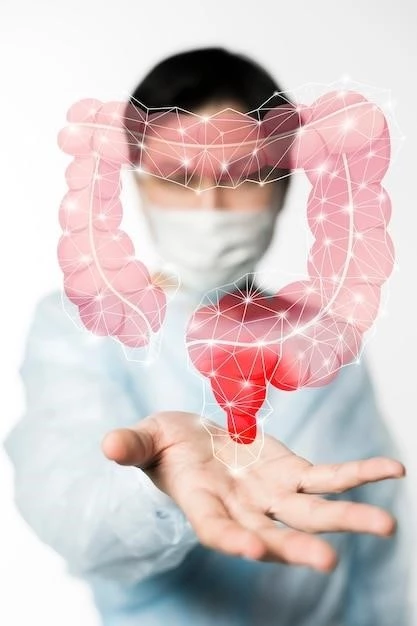Introduction
Hepatic veno-occlusive disease is a serious liver condition affecting blood vessels. It is crucial to understand its complexities.
Overview of Hepatic Veno-Occlusive Disease
Hepatic veno-occlusive disease, also known as sinusoidal obstruction syndrome, is a rare and potentially life-threatening liver disease. It is characterized by the blockage of small veins in the liver, leading to restricted blood flow. This condition can result in serious complications such as liver failure, fluid accumulation in the abdomen (ascites), yellowing of the skin and eyes (jaundice), and enlargement of the liver (hepatomegaly). Understanding the pathophysiology and clinical implications of hepatic veno-occlusive disease is essential for proper diagnosis and management.
Causes and Risk Factors
Understanding the etiology and common risk factors of hepatic veno-occlusive disease is crucial for its comprehensive management.
Understanding the Etiology of the Disease
Hepatic veno-occlusive disease is primarily caused by damage to the small blood vessels in the liver, leading to their blockage. This damage is often triggered by exposure to certain toxic substances, chemotherapy, or radiation therapy. Additionally, genetic factors and pre-existing liver conditions can predispose individuals to developing this severe liver disease. Understanding the underlying mechanisms responsible for the pathogenesis of hepatic veno-occlusive disease is essential for effective treatment strategies.
Identifying Common Risk Factors
Several common risk factors contribute to the development of hepatic veno-occlusive disease. These include exposure to certain medications, toxins, or herbal supplements, prior history of chemotherapy or bone marrow transplantation, as well as genetic predisposition. Individuals with underlying liver conditions such as hepatitis or cirrhosis are also at increased risk. Recognizing these risk factors and implementing preventive measures are crucial in the management and prognosis of hepatic veno-occlusive disease.
Symptoms and Diagnosis
Recognizing symptoms and employing accurate diagnostic methods are paramount in managing hepatic veno-occlusive disease.
Recognizing Symptoms of Hepatic Veno-Occlusive Disease
Hepatic veno-occlusive disease manifests with various symptoms including abdominal pain, ascites (abdominal fluid accumulation), jaundice (yellowing of skin/eyes), and hepatomegaly (enlarged liver). Additionally, patients may experience fatigue, nausea, and weight loss. Prompt recognition of these clinical signs is essential for early diagnosis and timely intervention to prevent disease progression and associated complications.
Methods of Diagnosis and Screening
Diagnosing hepatic veno-occlusive disease involves a combination of imaging studies such as ultrasound, CT scans, or MRI, along with liver function tests and liver biopsy. Screening for specific genetic markers may also aid in the diagnosis of this condition. Additionally, assessing the patient’s medical history and clinical presentation plays a crucial role in confirming hepatic veno-occlusive disease. Early and accurate diagnosis is vital for initiating appropriate treatment and improving patient outcomes.
Complications and Mortality Rate
Discussing potential complications and mortality rates is essential in understanding hepatic veno-occlusive disease outcomes.
Potential Complications Arising from the Disease
Hepatic veno-occlusive disease can lead to severe complications such as liver failure, portal hypertension, hepatic encephalopathy, and fluid overload. Additionally, it may result in multi-organ dysfunction and increased susceptibility to infections. Managing these complications requires a multidisciplinary approach involving hepatologists, transplant specialists, and critical care teams. Recognizing and addressing these potential complications in a timely manner is crucial for improving patient outcomes and reducing morbidity associated with hepatic veno-occlusive disease.
Analysis of the Mortality Rate Associated with Hepatic Veno-Occlusive Disease
The mortality rate of hepatic veno-occlusive disease varies depending on the severity of the condition and timely intervention. Patients with severe liver dysfunction and complications such as hepatic encephalopathy have a higher mortality risk. Early recognition, appropriate medical management, and, in some cases, liver transplantation can improve survival rates. Understanding the factors contributing to mortality in hepatic veno-occlusive disease is crucial for enhancing patient care and outcomes.

Treatment Options
Exploring available medical treatments and interventions is crucial for managing hepatic veno-occlusive disease effectively.
Available Medical Treatments for the Condition
Treatment options for hepatic veno-occlusive disease include supportive care to manage symptoms, diuretics for ascites, and addressing complications such as hepatic encephalopathy. In severe cases, liver transplantation may be necessary to improve outcomes. Close monitoring, nutritional support, and medications to maintain liver function are integral components of the treatment plan. Individualized care and a multidisciplinary approach are essential for optimizing patient management and quality of life.
Role of Transplantation and Chemotherapy in Managing the Disease
Liver transplantation is considered a definitive treatment for advanced cases of hepatic veno-occlusive disease. It offers the best chance for survival and long-term recovery. Chemotherapy may be used in some cases, especially in the context of underlying malignancies or as part of a preparative regimen for transplantation. The careful selection of candidates for transplantation and tailored chemotherapy regimens play a crucial role in managing hepatic veno-occlusive disease and improving patient outcomes.
Impact on Liver Blood Vessels
Understanding the effects on the hepatic artery and portal vein is essential in hepatic veno-occlusive disease.
Understanding the Effects on Hepatic Artery and Portal Vein
Hepatic veno-occlusive disease impacts the hepatic artery and portal vein by causing occlusion of small blood vessels in the liver. This obstruction leads to decreased blood flow, increased pressure within the portal vein, and compromised oxygen and nutrient delivery to the liver tissue. The resulting hypoxia and liver damage contribute to the progression of hepatic veno-occlusive disease and the development of associated complications. Understanding these effects is crucial for tailoring treatment strategies to address the vascular involvement in the disease.
Common Clinical Manifestations
Examining abdominal pain, ascites, jaundice, and hepatomegaly helps in identifying hepatic veno-occlusive disease.
Examining Abdominal Pain, Ascites, Jaundice, and Hepatomegaly in Patients
Abdominal pain, ascites (fluid buildup in the abdomen), jaundice (yellowing of skin/eyes), and hepatomegaly (enlarged liver) are common clinical manifestations of hepatic veno-occlusive disease. Assessment of these symptoms is fundamental in the diagnostic process to identify potential liver complications. Monitoring changes in these clinical signs over time helps healthcare providers in evaluating the progression and severity of the disease, guiding appropriate management strategies for patients with hepatic veno-occlusive disease.
